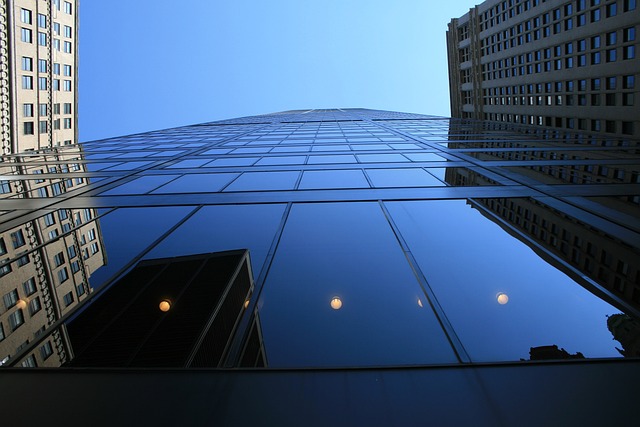Karachi, Pakistan's economic powerhouse, has witnessed a profound digital transformation in its retail sector. The combination of widespread smartphone adoption and internet penetration has led to the integration of traditional markets with modern shopping malls and online stores. This shift provides Karachiites with extensive product information, enabling informed purchases. E-commerce's rise has disrupted conventional retail models, prompting physical stores to innovate by integrating online sales with in-store experiences. The city's evolving retail landscape adapts to digital trends like mobile payments, offering swift and secure transactions while catering to tech-savvy consumers.
The retail landscape in Karachi, Pakistan’s vibrant metropolis, is undergoing a metamorphosis driven by digital innovations and evolving consumer behavior. This article explores key transformations shaping the city’s retail sector. We delve into the digital revolution, analyzing the impact of e-commerce and mobile payments. Shifting demographics and pandemic-induced changes in consumer preferences are examined through a Karachi case study. Additionally, we discuss omnichannel retail strategies, sustainability trends, and the role of social media in fostering ethical shopping practices within this dynamic urban center, all while highlighting unique aspects of Karachi’s retail transformation.
- The Digital Revolution in Karachi's Retail Sector
- – Impact of e-commerce and online shopping on traditional retail
- – Rise of mobile payments and digital wallets
- Shifting Consumer Preferences: A Karachi Case Study
The Digital Revolution in Karachi's Retail Sector

Karachi, as Pakistan’s economic powerhouse, has witnessed a remarkable digital revolution in its retail sector. The city’s traditional bustling markets have evolved into a vibrant blend of modern shopping malls and online stores. This transformation is largely driven by the increasing penetration of smartphones and internet connectivity among Karachiites. Consumers are now equipped with unparalleled access to information, enabling them to make informed purchasing decisions.
The rise of e-commerce platforms has further disrupted traditional retail models. Customers in Karachi can conveniently browse through a vast array of products from the comfort of their homes, compare prices, and read reviews before making a purchase. This shift towards digital retailing has not only enhanced consumer experience but also prompted physical retailers to adopt innovative strategies. Many local businesses are now integrating online sales with in-store experiences, ensuring they stay relevant in the dynamic landscape of Karachi’s retail sector.
– Impact of e-commerce and online shopping on traditional retail

The rise of e-commerce has significantly reshaped the retail landscape, particularly in bustling metropolitan areas like Karachi. Traditional brick-and-mortar stores are facing increasing competition from online shopping platforms, which offer convenience, a wider product selection, and competitive pricing. Customers in Karachi, known for their savvy shopping habits, are increasingly embracing digital channels for their purchases, leading to a decline in foot traffic at physical retail outlets.
This shift has forced traditional retailers to adapt or risk becoming obsolete. Many stores in Karachi have responded by integrating online sales into their business models, setting up e-commerce websites and leveraging social media platforms to reach customers. Others are experimenting with innovative strategies like click-and-collect services, where shoppers can order online and pick up their items at designated locations, combining the convenience of online shopping with the touch of in-person interaction.
– Rise of mobile payments and digital wallets

In recent years, Karachi, like many metropolises worldwide, has witnessed a significant shift in retail and consumer behavior, primarily driven by technological advancements. The rise of mobile payments and digital wallets has revolutionized the way residents conduct their daily transactions. This new trend is not just a convenience but a necessary adaptation to the fast-paced urban lifestyle. With a simple tap or swipe, Karachis can now pay for goods and services at various stores, from local kiosks to high-end malls, enhancing speed and security in their shopping experience.
This digital transformation has also empowered consumers with more control and accessibility. They can easily manage their finances through dedicated apps, track expenses, and access promotions and discounts tailored to their preferences. The convenience of mobile payments has encouraged a change in consumer behavior, fostering a culture of instant gratification and encouraging more frequent purchases, especially among the younger generation. Karachi’s vibrant retail scene is thus evolving to accommodate these digital trends, ensuring it stays relevant and competitive in the modern era.
Shifting Consumer Preferences: A Karachi Case Study

In the vibrant city of Karachi, a bustling metropolis with a diverse population, consumer behavior has undergone significant transformations in recent years. This case study highlights how shifting preferences among Karachis have revolutionized retail dynamics. As consumers become increasingly discerning and tech-savvy, traditional shopping patterns are evolving rapidly. The rise of e-commerce platforms has significantly impacted purchasing decisions, offering convenience and a vast array of choices that brick-and-mortar stores struggle to match.
Karachi’s diverse demographic landscape, with its young, urban population embracing modern trends, has led to a surge in demand for unique, personalized shopping experiences. Retailers are now adapting by integrating online and offline channels, creating seamless shopping journeys. This shift is evident in the popularity of pop-up stores, experiential retail concepts, and social media-driven consumer engagement strategies. Karachis’ changing preferences present both opportunities and challenges for retailers, urging them to innovate and stay relevant in a dynamic market.
The transformations in retail and consumer behavior in Karachi reflect a broader global trend, as traditional brick-and-mortar stores adapt to the digital revolution. The rise of e-commerce and online shopping has significantly impacted the retail sector, changing the way Karachis shop. Mobile payments and digital wallets have further streamlined this shift, offering consumers convenience and speed. Understanding these transformations is crucial for businesses aiming to thrive in today’s competitive market, ensuring they stay relevant and cater to the evolving preferences of Karachi’s dynamic consumer base.
